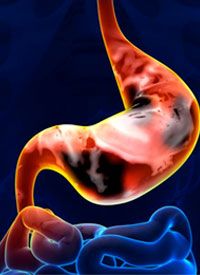Article
Trastuzumab Beyond Progression Shows Promise in HER2+ Gastric Cancers
Author(s):
Results from a retrospective multicenter study suggest that continuing trastuzumab beyond progression may improve survival in patients with HER2-positive advanced gastric or gastroesophageal junction adenocarcinoma who progress on first-line trastuzumab plus platinum-based chemotherapy.

Results from a retrospective multicenter study suggest that continuing trastuzumab (Herceptin) beyond progression may improve survival in patients with HER2-positive advanced gastric or gastroesophageal junction (GEJ) adenocarcinoma who progress on first-line trastuzumab plus platinum-based chemotherapy.
The study demonstrated an approximate doubling of progression-free survival (PFS), from 2.3 months to 4.4 months, as well as overall survival (OS), from 6.1 months to 12.6 months in those patients in whom trastuzumab was continued along with second-line chemotherapy compared with those in whom trastuzumab was discontinued.
The finding should pave the way for a randomized controlled clinical trial investigating continuation of anti-HER2 therapy with trastuzumab in the second-line setting in this patient population, said lead investigator Juliette Palle, who presented the data at the 2017 Gastrointestinal Cancers Symposium.
Trastuzumab given with platinum-based chemotherapy is the standard first-line regimen in HER2-positive advanced gastric cancer but there is no standard approach in the second-line setting. Trastuzumab beyond progression is currently accepted in HER2-positive metastatic breast cancer.
“Secondary resistance to anti-HER2 therapy is not the same as resistance to cytotoxic drugs and so we can assume that resistance to anti-HER2 therapy would not systematically occur in the second line,” said Palle, a resident at Hôpital Europeen Georges Pompidou in Paris.
She and co-investigators looked at 151 consecutive patients with HER2-positive advanced gastric or GEJ adenocarcinoma from 26 academic centers or hospitals in France. Patients included were those who received second-line chemotherapy with irinotecan, a taxane or platinum salt, with or without trastuzumab after progression on first-line trastuzumab plus platinum-based chemotherapy, between May 2010 and March 2015.
After excluding patients in whom first-line treatment was nonstandard or stopped for toxicity, in whom second-line treatment could not be identified, patients who received a second-line treatment that was part of a research protocol, and those who received treatments other than those specified, 104 patients were left for analysis.
Median age of the patients was 60.8 years, 78.8% were male, and 71.2% had an ECOG performance status of 0 or 1. The primary tumor site was the GEJ in 54.8% and the stomach in 45.2%. HER2 status was immunohistochemistry (IHC) 3+ in 79.8%, IHC 2+ or positive by fluorescence in situ hybridization in 16.4%, and unknown in 3.8%. Among the population, 69.2% of patients had more than 2 metastatic sites.
First-line chemotherapy consisted of trastuzumab plus fluoropyrimidine and cisplatin in 54 patients (51.9%) and trastuzumab plus oxaliplatin in 50 (48.1%).
Second-line therapy was at the discretion of the treating physician. Of the 104 patients, 39 patients had trastuzumab continued in the second line and 65 did not, indicating that many physicians in France have already been using trastuzumab off-label as second-line treatment, said Palle.
For 67 patients (64%), second-line chemotherapy consisted of leucovorin calcium, fluorouracil, and irinotecan (FOLFIRI), including 19 (18%) who continued trastuzumab. Twenty-three patients (22.1%) received a taxane (paclitaxel or docetaxel), including 12 (11.5%) who continued trastuzumab. Fourteen patients (13.5%) received a platinum-based chemotherapy (different from that used in first-line), including 8 (7.7%) who also continued trastuzumab. Eight patients remained on second-line therapy at the time of analysis.
In assessing PFS and OS of all second-line chemotherapy regimens, continuation versus discontinuation of trastuzumab was significantly associated with an increase in PFS (HR, 0.51; P = .002) and OS (HR, 0.44; P = .002).
“Since the groups are relatively small, and the study was not designed to compare the different regimens, we were not able to analyze the difference in PFS and OS by individual chemotherapy regimens,” said Palle.
On multivariate analysis, continuation of trastuzumab was associated with significantly longer PFS (HR, 0.56; P = .01) and OS (HR, 0.47; P = .004).
<<<
Palle J, Tougeron D, Pozet A, et al. Trastuzumab beyond progression in patients with HER2-positive advanced gastric adenocarcinoma: a multicenter AGEO study. J Clin Oncol 35, 2017 (suppl 4S; abstract 94).









